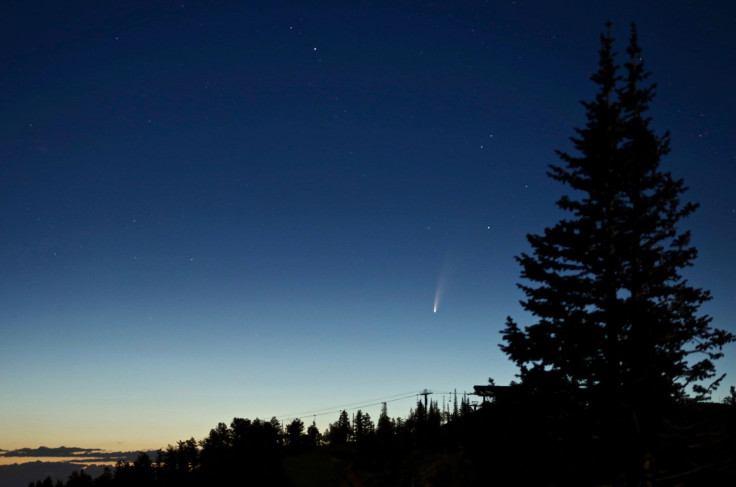Sky Map Shows Where Visible Comet NEOWISE Will Appear
KEY POINTS
- Comet NEOWISE has reached its closest distance to Earth
- A sky map shows where sky watchers can see the comet
- The comet will disappear from view in early August
A new map shows where the visible comet NEOWISE will appear in the sky after its closest approach to Earth. Even though the comet is already starting to move away from the planet, it can still be viewed with the human eye.
Comet NEOWISE, which is officially known as C/2020 F3, was first discovered by NASA on March 27 using its Near-Earth Object Wide-field Infrared Survey Explorer (NEOWISE) telescope. Recently, the comet reached its closest distance to Earth by flying past the planet from a distance of 0.69 astronomical units or 64 million miles away.
As the comet moves farther away from Earth, its brightness will decrease. According to astronomers, comet NEOWISE will remain visible from Earth until early August. After that, sky watchers might need to use a telescope or pair of binoculars to spot the comet.
This means that sky watchers only have a couple of weeks or days left to watch NEOWISE. Once it disappears, it will take about 6,800 years before it returns to Earth’s neighborhood.
Fortunately, the comet can still be spotted from Earth by the human eye. Those looking to catch the comet may do so using the sky map provided by SpaceWeather.com.
As indicated in the map, the comet will appear in the northwest portion of the sky on Friday after sunset. It will appear near the right side of the Moon between the constellations Leo and the Big Dipper.
Although the comet will not appear as bright as it did a couple of days before, it will still have a distinct glow around it. Also, its tails will still look prominent as it appears in the sky.
Depending on weather conditions, the comet might appear like a bright star. Although it’s still visible to the human eye, using a telescope or binoculars will provide a better glimpse of NEOWISE.
“If you’re looking at the sky without the help of observation tools, Comet NEOWISE will likely look like a fuzzy star with a bit of a tail, so using binoculars or a small telescope is recommended to get the best views of this object,” NASA stated.


© Copyright IBTimes 2024. All rights reserved.





















